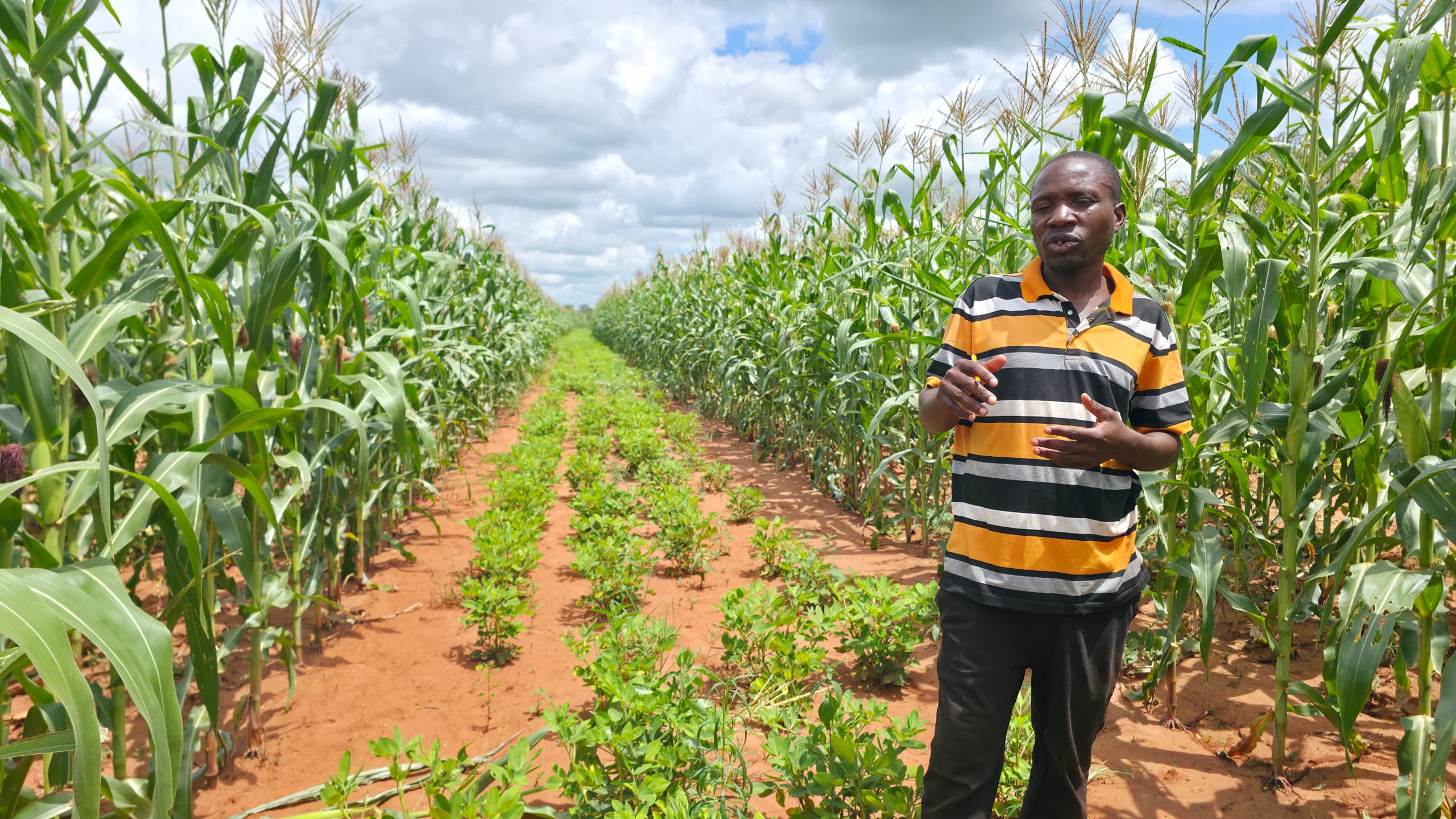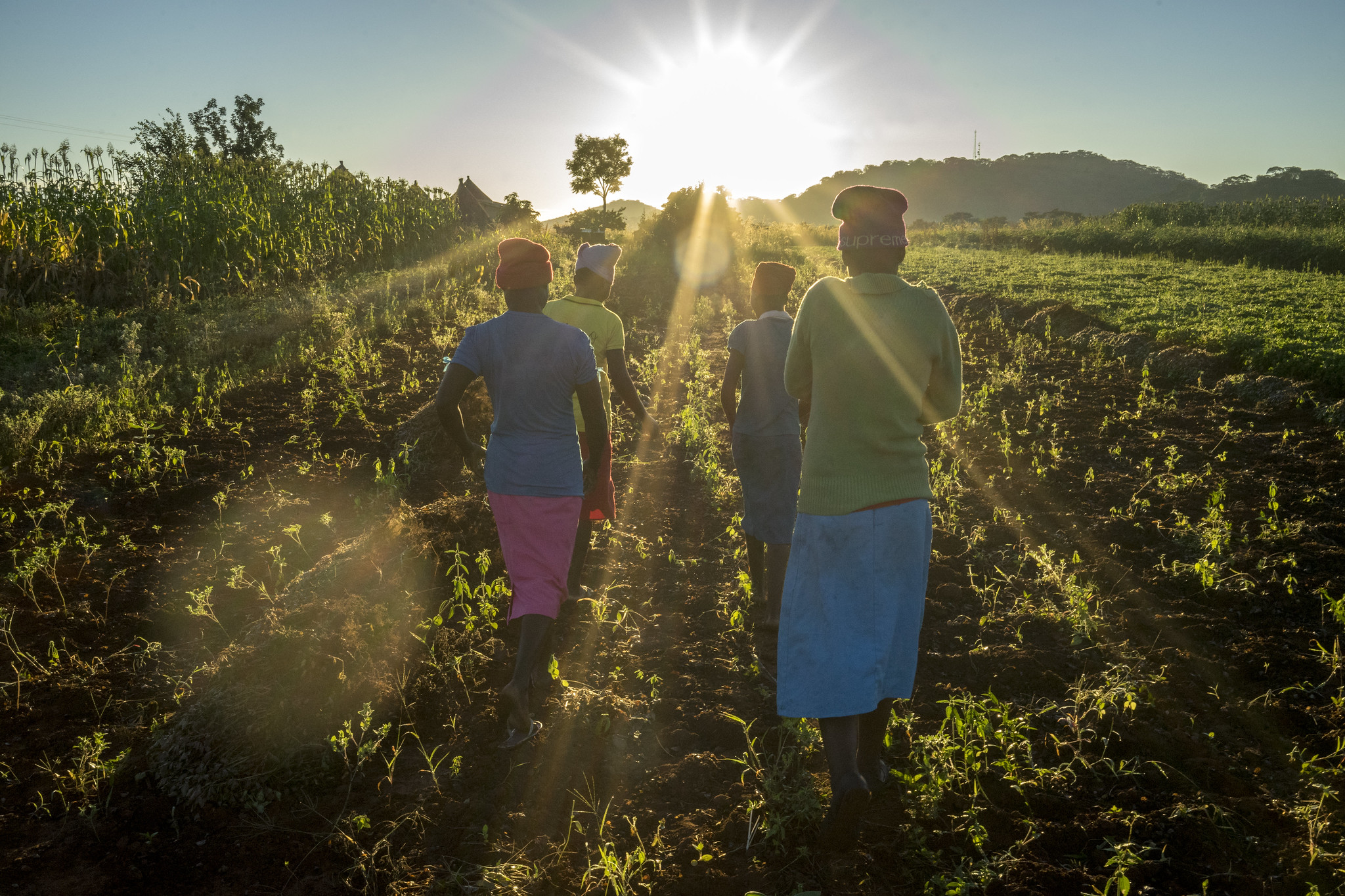
Each annual field tour offers a fresh perspective on the realities farmers face. It’s a window into how different agroecological conditions shape farming experiences and outcomes, revealing what works in farmers’ fields and what doesn’t under an increasingly unpredictable climate.
This year, in Zambia’s Southern Province, the story is promising, as good rains have set the foundation for a favorable crop—a stark contrast to the past season, marked by the El Niño-induced drought.
In the Choma district’s Simaubi camp, Conservation Agriculture (CA) trials paint a picture of resilience and adaptation. The area experiences a semi-arid climate with erratic rainfall averaging 600–800 mm annually, often prone to dry spells and drought years, such as the last, when only 350–400 mm were received. The soils are predominantly of sandy loam texture, with low organic matter and poor water retention capacity, making them susceptible to drought stress.
The area around Simaubi hosts seven mother trials, where a wide range of technologies are tested, and 168 baby trials, where a subset of favored technologies are adapted to farmers’ contexts. Each trial tests different maize-legume intercropping and strip cropping systems against conventional tillage-based practices. As adoption steadily rises, more farmers are experiencing firsthand the benefits of sustainable intensification.
A Champion in the Making
Meet Victor Munakabanze, a farmer with decades of experience and a passion for learning. He began his CA journey as a baby trial implementer, experimenting with the four-row strip cropping system on a 10 m by 20 m plot, with four strips of ripped maize and four strips of ripped groundnuts. Starting in the 2020/21 season—despite a slow start—he persevered. Instead of giving up, he and his wife embarked on a learning journey that led them to scale up and champion CA technologies in their community.
Victor has been part of CA trials under the Sustainable Intensification of Smallholder Farming Systems in Zambia (SIFAZ) project in the Southern Province for five years and has seen the power of small steps in driving change. His initial trial plots sparked hope, showing him that improved yields were possible even under challenging conditions. Encouraged by these results, he expanded his CA practices to a 1.5-hectare plot during the 2024/2025 cropping season, investing in his farm using income from goat sales. He successfully integrated livestock within the cropping system, using goat manure to complement fertilizers—an approach that has not only improved soil fertility but also strengthened the farm’s sustainability.
From Experimentation to Expansion
Victor’s decision to adopt CA at scale was driven by tangible results. He found that intercropping maize and groundnuts in well-spaced rip lines could optimize overall yields better than conventional methods.
However, the transition wasn’t without challenges. In the first season, he started late and harvested little. The following year, delayed planting resulted in just four bags of maize from the 200 m². The El Niño event during the 2023/24 season wiped out his harvest completely. But through each setback, he refined his approach, improving his planting timing and weed management by incorporating herbicides when needed.
Now, his farm serves as a learning hub for fellow farmers from the surrounding community in Simaubi camp. They are drawn in by his success, curious about his planting techniques, and impressed by his ability to integrate crops and livestock. With 23 goats, a growing knowledge base, and a determination to share his experience, Victor embodies the spirit of farmer-led innovation. His story is proof that CA can be practiced beyond the trial plots—it is about ownership, adaptation, and scaling what works.
Inspiring Adoption, One Farmer at a Time
Victor’s journey highlights a crucial lesson: when farmers see the benefits of CA on a small scale, they are more likely to adopt and expand these practices on their own. His resilience, coupled with a keen eye for what works, has made him a role model in his community. From testing to real-world application, his success is growing evidence of the replicability of CA technologies. As adoption spreads, stories like Victor’s pave the way for a future where sustainable farming is not just an experiment—but a way of life.

 Innovations
Innovations